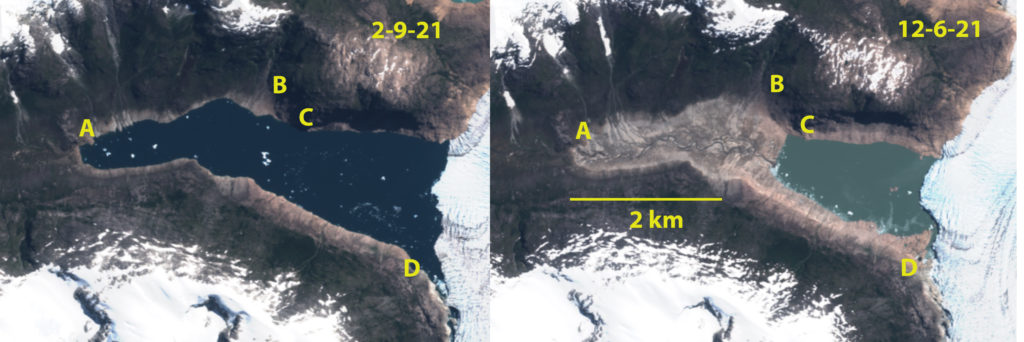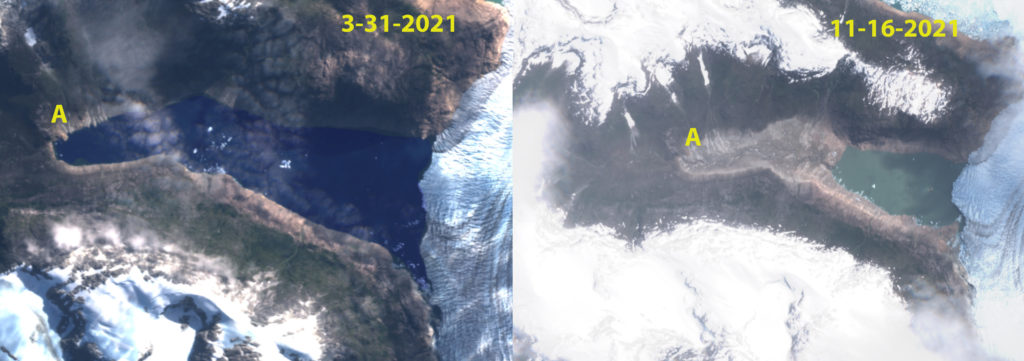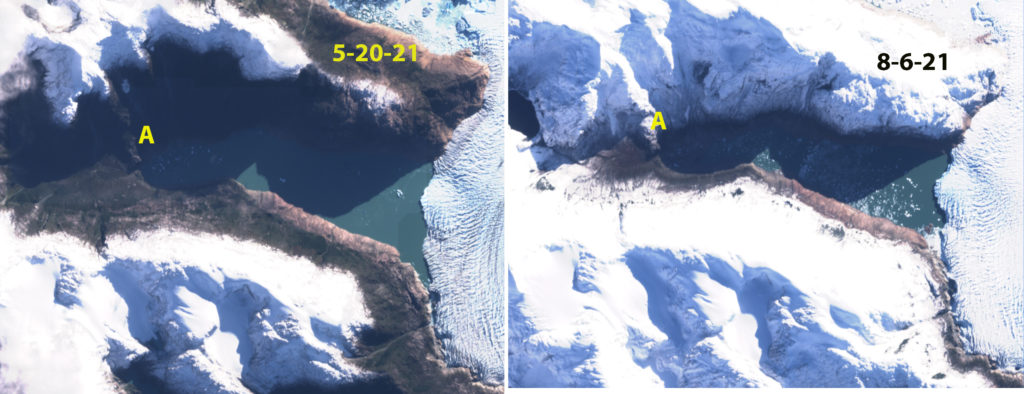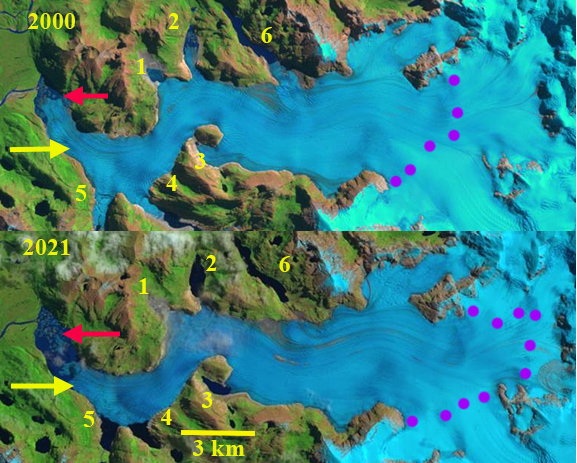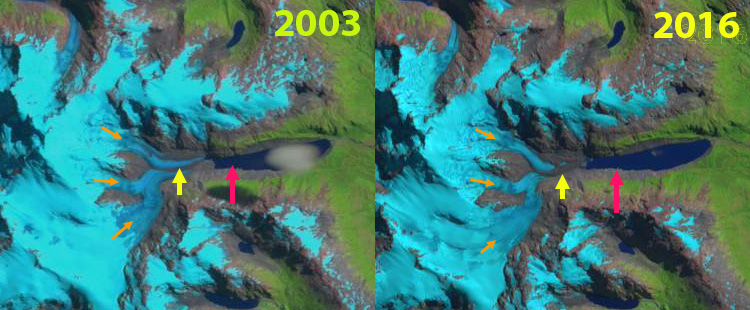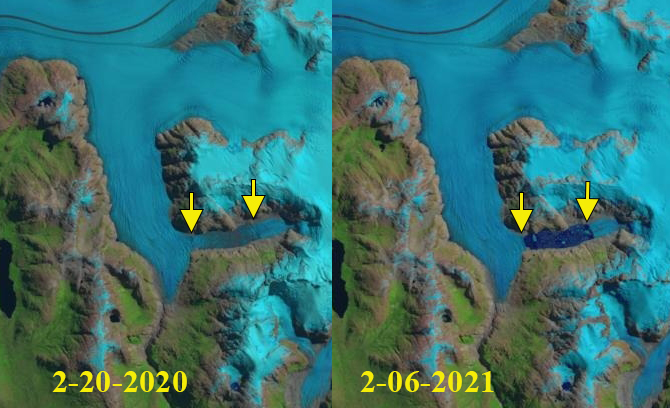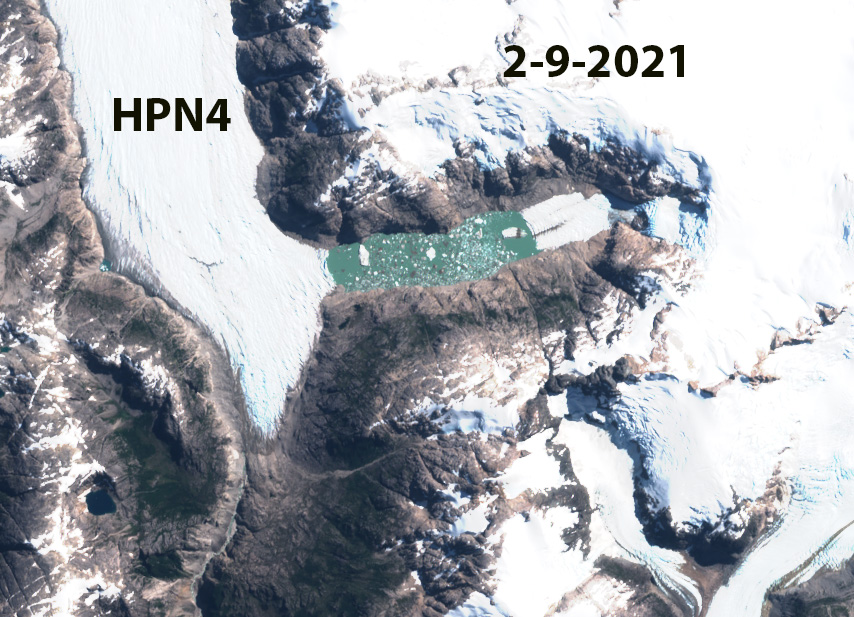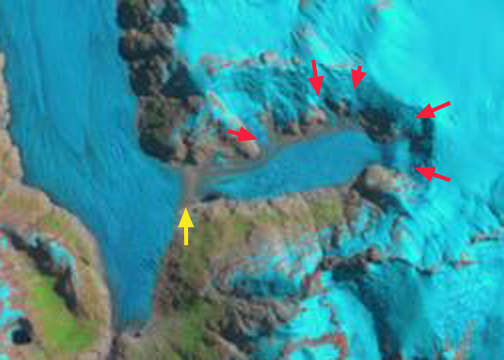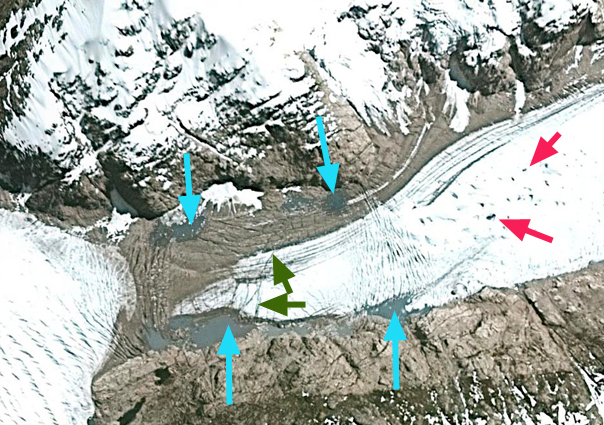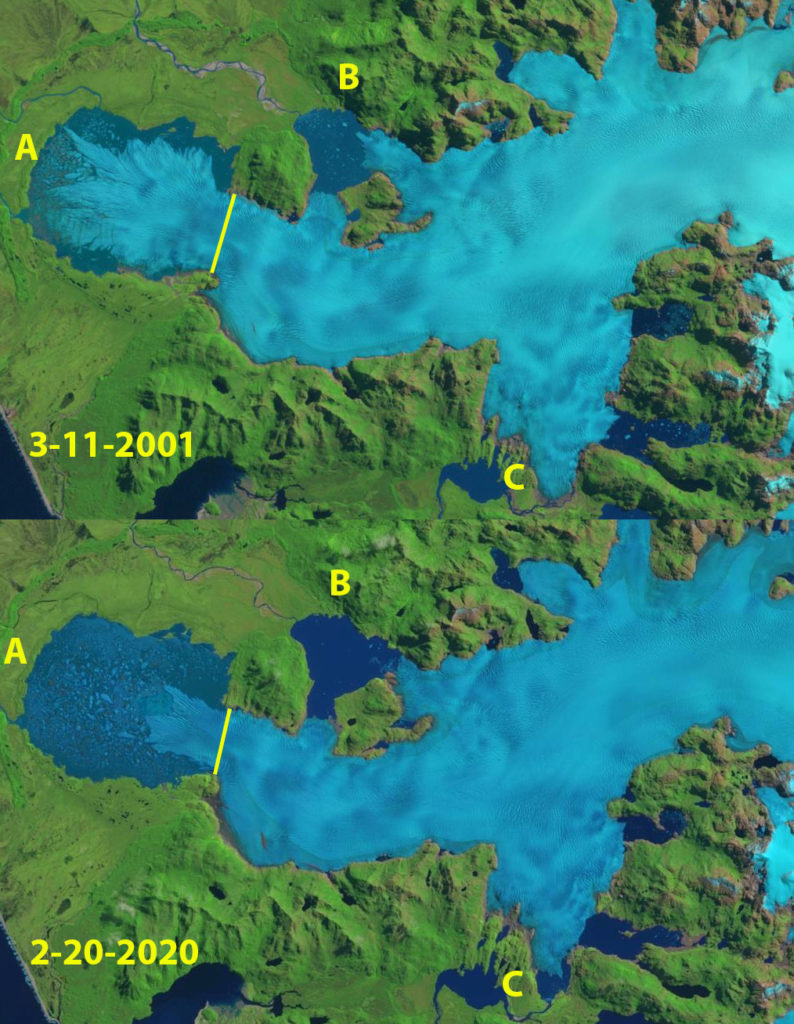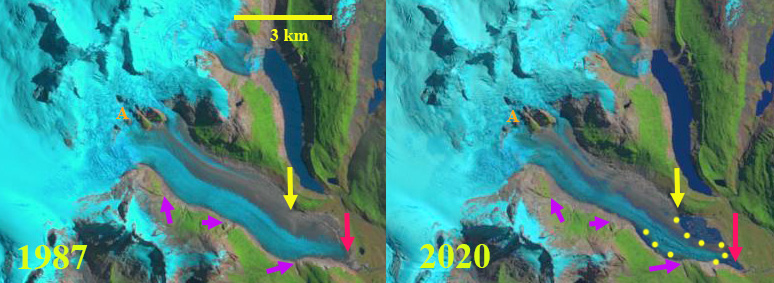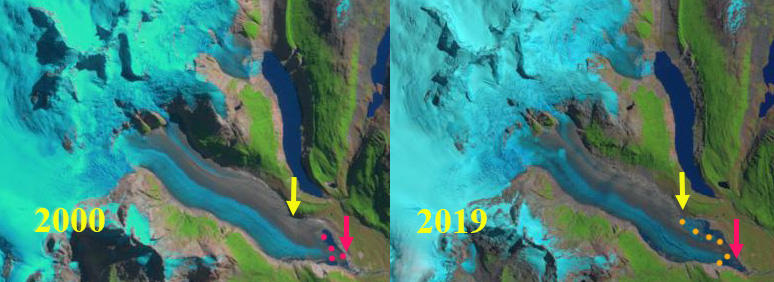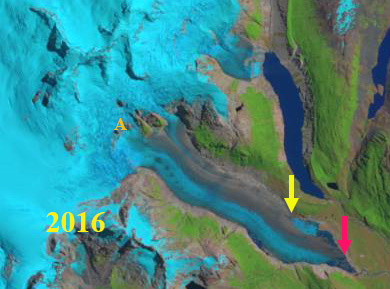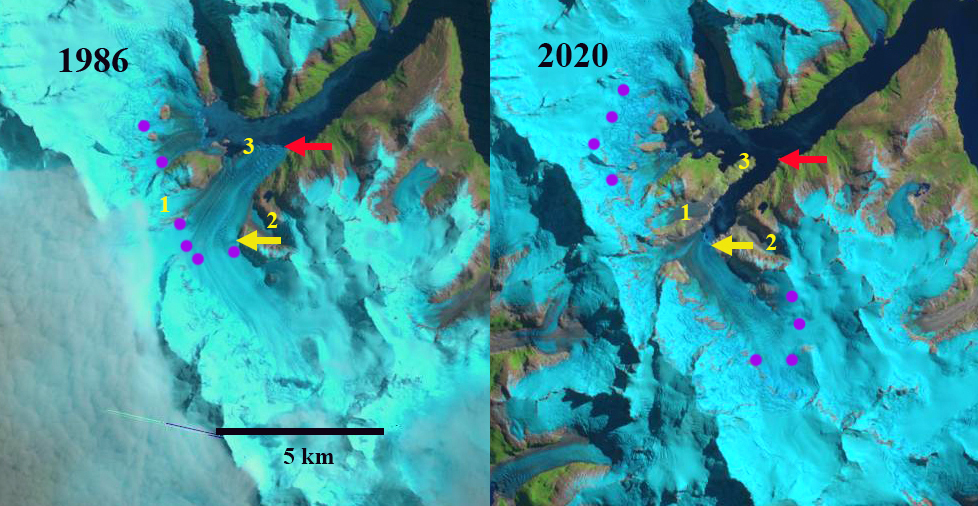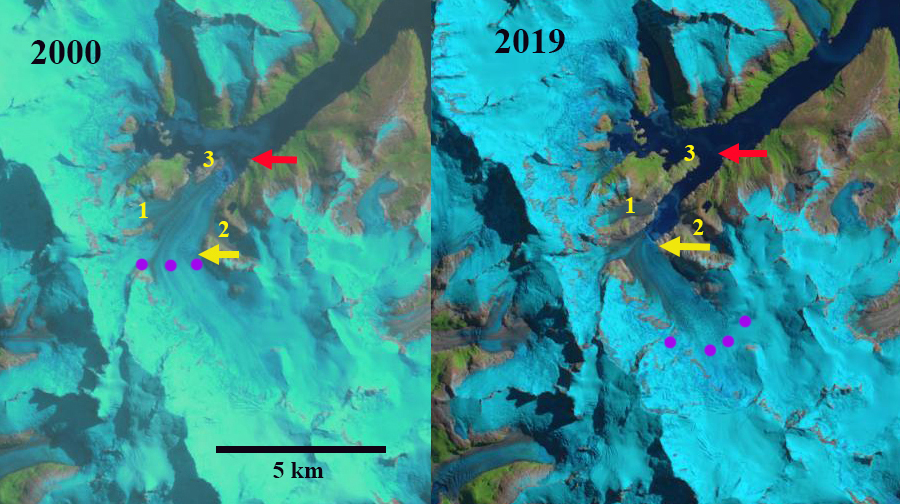Laguna de los Tempanos full on February 9, 2021 and drained on December 6, 2021 in Sentinel 2 images. Point A marks the western margin when full. Point C marks the western margin when drained.
Steffen Glacier is the south flowing glacier from the 4000 km2 Northern Patagonia Icefield (NPI). Several key research papers have reported on the spectacular retreat of this glacier in recent years. Glasser et al (2016) reported that Steffen Glacier proglacial lake area expanded from 12.1 km2 to 20.6 km2 from 1987 to 2015, due tin part to a 100 m snowline rise. noted to have risen ~100 m. Dussaillant et al (2018) determined the annual mass loss of NPI at ~-1 m/year for the 2000-2012 period, with Steffen Glacier at -1.2-1.6 m/year. Millan et al (2019) indicate the area of tributary glacier convergence near the northwest terminus and above the glacier is 700 m thick, and that the glacier has been retreating along an area where the glacier bed is below sea level, though the terminus now is close to sea level. Steffen Glacier retreat from 1987-2019 was 4.4 km, ~137 m/year (Pelto, 2019). Aniya et al (2020) reported on 19 glacier drainage events from 1974-2020, with most occurring in late summer or early Fall. They noted the largest in 2016 and 2017 were the first to expose much of the lake bottom.
There are two large ice dammed proglacial lakes on the west side of the glacier. Laguna de Los Tempanos is the southern one 6 km upglacier of the current terminus and 11 km upglacier of the 1987 terminus position. Here we utilize Landsat and Sentinel imagery to examine the evolution of the lake from 1987-2021, Including the 2021 drainage event.
Laguna de los Tempanos in Landsat images from 1987, 1999, 2012 and 2019. Yellow arrow is western extent of the lake in 1987 and 1999, while Point A is the western extent in 2012 and 2019.
In 1987 the area of the lake is 5.2 km2 extending west past point A to the yellow arrow. In 1999 the water level is lower leading to a peninsula developing at Point A, with a lake area of 5.0 km2. By 2012 the water level had dropped further and the west margin of the lake was now at Point A and the lake area was 4.8 km2. The filled size remained unchanged for most of the 2012-2021 period, though there was large drainage events in 2016 and 2017 the lake rapidly refilled.
On November 17, 2016 the lake is full, but it is drained on April 16, 2017 with evident icebergs on the bottom, the drainage event occurred on March 30/31 2017 (Aniya et al 2020) .
By January 21, 2018 the lake is again full and is full again on December 7, 2018 in Sentinel 2 images.
The lake is full on March 27, 2019 and on Feb. 20, 2020 in Sentinel 2 images.
On March 31, 2021 the lake is still full, by November 16, the lake area had declined from 4.5 km2 to 1.9 km2, in Sentinel 2 images.
The drainage event appears to have been in the early spring as the lake is full on May 20, 2021 at the start of the winter season and at the end of the winter season on August 8, 2021 in Sentinel 2 images. The lake remained largely filled on Sept. 7, 2021, but had drained by Oct. 7, 2021.
By October 7, 2021 the lake had drained and two months later the lake is still not filling. As Steffen Glacier thins, its ability to impound this lake has diminished from 1987 to 1999, from 1999 to 2012 it diminished again. Now we may have another evolution in this process, with the more complete drainage starting in 2016 and now in 2021 the first event where refilling is not progressing.

